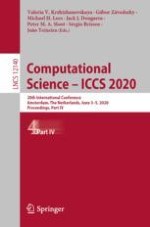2020 | OriginalPaper | Chapter
From Population to Subject-Specific Reference Intervals
Authors : Murih Pusparum, Gökhan Ertaylan, Olivier Thas
Published in: Computational Science – ICCS 2020
Publisher: Springer International Publishing
Activate our intelligent search to find suitable subject content or patents.
Select sections of text to find matching patents with Artificial Intelligence. powered by
Select sections of text to find additional relevant content using AI-assisted search. powered by
